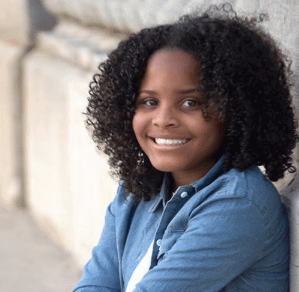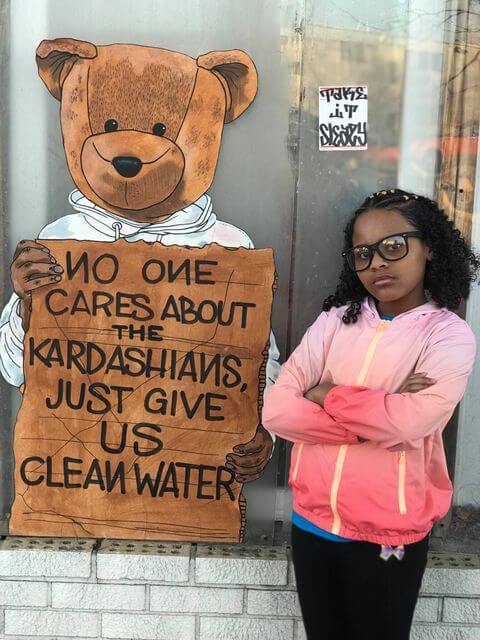- The Meaning of Critical Thinking: A Key Skill for Navigating Today’s Information Landscape - November 3, 2025
- Grandparents Can Develop Activist Grandchildren - September 29, 2025
- Top Six Reasons Credit Union Benefits Are a Smart Choice Over Banks - August 18, 2025
Last Updated on August 17, 2025

Mari Copeny was eight years old when she wrote a letter to President Obama to ask him to help with the Flint water crisis. Starting with that one action, she has done more to make the world a better place than many adults. People in Michigan know Mari as ‘Little Miss Flint.’
In 2014, the state of Michigan caused the water crisis in Flint when, to save money, they switched the city water supply from Detroit Water and Sewerage Department service to the Flint River. Although residents complained that the water was brown and smelled terrible, authorities told them it was safe. It wasn’t. The water corroded Flint water system pipes and exposed the residents to dangerous levels of lead.
The Flint Water Crisis

Tipped off by a friend who used to work at the EPA, doctor Mona Hanna-Attisha checked the impact on lead levels in children’s blood and found they had almost doubled since the cost-saving measure was instituted. She documented and published the results, worried about warning Flint residents. People can have high lead levels without any symptoms; when lead’s impact on the body and mind makes itself know it is too late.
“In the summer of 2015, Hanna-Attisha heard of the possibility of lead being released into Flint’s water and said she “freaked out.” Lead is not only an irreversible neurotoxin that can significantly affect children’s cognition and behavior, it is also a form of environmental injustice and racism against kids in underserved areas such as Flint.” – Annie Fitzpatrick
Any level of lead is a threat, particularly to children.
Living without Safe Water
In addition to lead exposure, contaminated water caused an outbreak of Legionnaire’s disease that resulted in 12 deaths. Mari’s family and many others found simply showering in the water caused skin reactions and hair loss.
Mari produced a video demonstrating how difficult it is to cook a meal without safe water. She uses bottled water to wash the vegetables and as part of the recipe during the cooking process.
Many families rely on bottled water for cooking, bathing, and brushing their teeth, and it is a reminder of how much we take safe water for granted.
[Inspired by Mari Copeny? Learn more about young activists.]
President Obama came to Flint to see Mari

Obama came to visit Flint in direct response to her letter about the Flint water crisis.
“When she saw the president, she ran to him at full speed, and he lifted her up. As he set her down, she placed her hands firmly on her hips, looked him in the eye, and said, “You know, I wrote to you!” Mirroring her pose, he responded, “I know! That’s why I decided to come.” – Mary Pauline Lowery
Although the federal government had limited authority in the water crisis, Obama authorized 100 million dollars to help rebuild the pipes.
The Flint Water Crisis Lingers
As of April 2019, the residents of Flint have suffered the water crisis for five years. Flint is working on replacing the damaged pipes, but that will not be complete until 2020. Although the water has tested at normal levels, Flint residents don’t trust that it is indeed safe. Some areas are still experiencing elevated levels of lead in their water. After what they’ve been through, they don’t dare expose babies and children to more harm.
“On one level, this story in Flint is about water. But on another level, it’s about trust in government, feeling like your voice matters and that elected leaders care about you. Pipes are hard to fix. Those other things are even harder.” – Ari Shapiro
In April 2018 the state stopped providing free bottled water. So residents must rely on donations or purchase bottled water. Mari raised $27,000 in two weeks to help residents get the water they need.
Mari’s Accomplishments

Mari continues to help the residents in Flint. Her experience with activism has led to a goal to run for President in 2044.
“My mom told me going in that a lot of times my words would not be heard and I would have to work 20 times harder than most adults because I am a kid and adults just don’t take kids seriously. I think it is important for youth to be engaged, especially now, with politicians messing with our futures and our lives before we are even old enough to vote. It is good to know that one simple march or protest won’t create instant change; it’s more of a kickoff to a longer race to get the change we want to see. It may seem hard and feel like you’re being ignored, but know that the more you speak up and use your voice, people will start to listen.” – Mari Copeny
In addition to her work raising money and awareness of the Flint water crisis, Mari also participates in Pack Your Back to help kids with school supplies. Mari’s story shows us the power of youth activism, and I can’t wait to see what she does next.
In April 2024, Teen Vogue published “Mari Copeny Is More Than Little Miss Flint: An Activist Grows Up.” This update on Mari’s life and work explores how her life and goals have changed over time.
Mari’s knack for distilling some of today’s most pressing problems into urgent yet relatable content is just one dimension of her power. It’s a skill she is grateful for — yet tired of. She is encountering a common paradox that youth activists face as they mature and begin to morph into more than just a mouthpiece. ~Imani Mixon, Teen Vogue
She has outgrown her Little Miss Flint nickname, but she certainly has not outgrown her passion for the people of Flint and environmental justice.
[Learn more about how to find your passion and change the world.]
READ MORE
What the Eyes Don’t See: A Story of Crisis, Resistance, and Hope in an American City by Dr. Mona Hanna-Attisha. Read Iraqi-American immigrant Hanna-Attisha’s account of the Flint water crisis.
Inspired by Dr. Hanna-Attisha? Browse more examples of artistic activism.
Browse more activist profiles.
Environmental Injustice is Something Awful in Your Backyard
Photo of Mari Copeny from Ebony Magazine.




Pingback: Environmental injustice is something awful in your backyard • Life At the Intersection
Pingback: Get Inspired By Amazing Activists • Life At the Intersection
Pingback: How to Use Artistic Activism to Change the World
Thank you so much for sharing and participating at #SeniSal RT done
I love #SeniSal, Esme.
Thank you for sharing this post, what an impressive young woman and courageous and wise doctor. Michele Somerville
Michele, thanks for stopping by. Mari is still going strong, caring for kids in Flint and fighting for safe water. Terri
Pingback: Brilliant Lessons and Strategies #155 Senior Salon • Esme Salon
Pingback: Eye-Opening Ways Nature's Sounds, Smells, and Sights Can Heal You